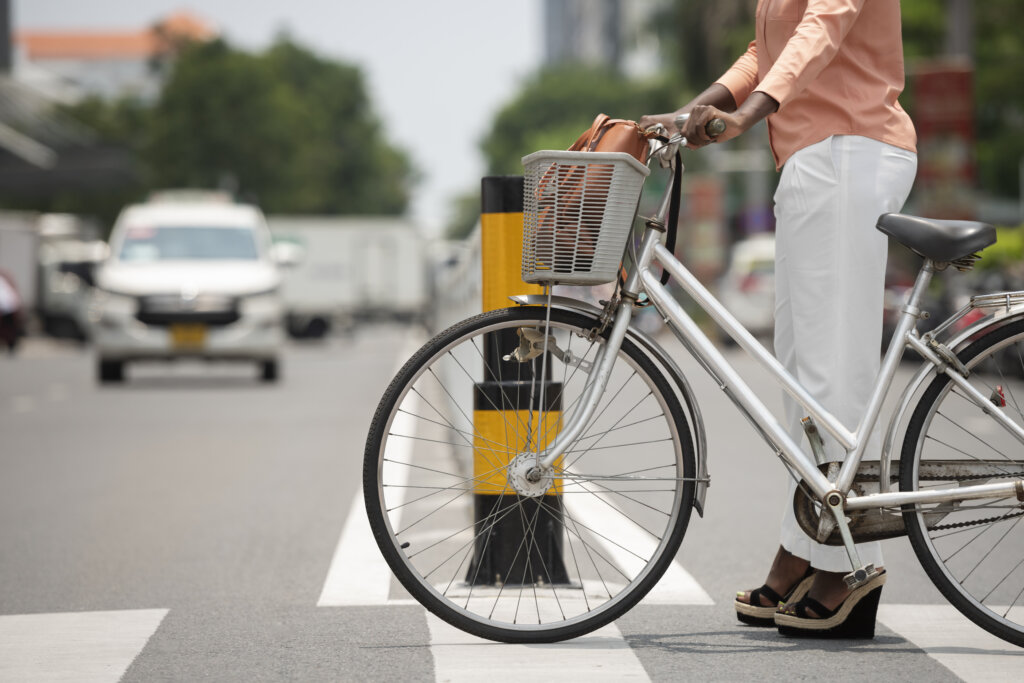
Every year, around 113 fatal accidents happen in California.
What do you think? How many people know about the information they need to gather after that?
One of the significant points you need to remember.
Everyone in California has a maximum of two years to claim personal damage in an accident. But the longer you wait, the more challenging it will become to seek the compensation you deserve. The immediate priority is your well-being and safety, but don’t leave the scene. This can point a lot of figures towards you.
So, it’s time to understand your rights after a cycling collision–
1. Gather data
Collecting as much information as possible about the other party is vital. This includes the name, license plate number, phone number, policy or insurance number, or any other valid information. It would also be good to collect the number and names of the people involved in the scenario.
You should also do the same with the involved party. Offer valid information to them and cooperate. This simple step helps to process the insurance claim quickly and facilitates a smooth resolution of the current situation.
Moreover, the driver might refuse to provide valid information. At that time, don’t panic; take a picture of the driver and his vehicle and the damage done, and let the police do the further work.
2. If possible, consider to take a video or photos of the scene
What harm does recording the scene cause?
None. For your and the police’s convenience, it is advisable to document the situation, as this serves as robust evidence and shows comprehensive proof of the incident.
Recording injuries after an accident is essential for constructing a compelling case. Take crisp, multi-angle pictures that highlight cuts, bruises, and swelling. Videos provide a thorough perspective and use narration to highlight suffering and constraints. These two visual records demonstrate the impact of the accident on well-being, which provides persuasive proof. These images support testimony in court, convincing jurors or judges of the harm sustained. Precise and comprehensive documentation is essential—these images are essential to obtaining just compensation.
3. It’s time to call the police
Staying at the scene and contacting the police is crucial in an accident. Safety and compliance should be given more importance than clearing debris or helping the injured. Police involvement is essential for documenting and investigating crashes resulting in injury or death, as California law mandates.
Calling in law enforcement starts formal paperwork and provides quick assistance in removing wreckage. The presence of police handles crises and protects essential information and proof. Their ensuing report, which includes the date, time, persons involved, citations, and witness testimonies, is eventually used as critical evidence.
This certified report strengthens your case and helps with legal evaluations and insurance. Complete cooperation guarantees the correctness and improves your negotiating or legal position. Recall that quitting too soon could harm your case and have legal repercussions.
4. Moving other vehicles off the road
After a collision, everyone’s safety should come first. After ensuring everyone is safe and turning on the warning lights, relocate your bike to a secure location if it’s safe. When warning signals are available, warn oncoming vehicles like cones or triangles.
Severe damage or injuries may make transporting vehicles impossible. In such instances, heed the advice of law enforcement. Before you move, take safe pictures of the area, including the locations of the vehicles, any damage, and any pertinent road signs. These photos can be used for legal and insurance purposes.
Safety is still the top priority; follow official instructions or seek advice before entering a moving vehicle. Put your health first and get the information you need to handle the post-collision process.
5. Notify the insurance company about the accident
Calling the insurance company is one of the smartest moves, as they help you file a claim for the damage and cover the injuries. Don’t accept paying the other and taking responsibility for the accident.
Sometimes, you think a minor injury might not cost your pocket, but you never know what can lead to severe harm. For the safer side, consider seeking medical attention to identify the internal issues before the devastating stage. However, Do not fake your injuries for compensation.
6. Contacting your lawyer
It is up to you, but it is advisable to contact your lawyer to get the settlement of the issue. You can sort out the matter independently in case of a minor accident, but don’t do anything in a major without a lawyer. It is your right to get compensation for your losses.
Conclusion
The immediate step is an intelligent choice; don’t procrastinate. In the aftermath of the crash, taking care of yourself and taking quick steps can help you protect yourself from significant injuries. Make sure that you have collected the essential data and information.
Back to blog